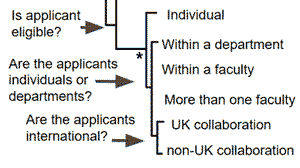
What do we know about designing really complex forms?
When I first started discussing the world of grant applications with Karen Fernandes, Senior Product Manager at Cambridge University, I realised that we we now have plenty of good options for the simpler forms: one person dealing with a few questions. We are gradually creating good patterns for the more complex forms – provided they are completed by one person.
But we don’t yet have much to help us when we have a really complex form.
In this talk at the HE Connect conference, Karen and I mused on applications for academic grant – typically, exceptionally complex forms. These grant applications often require input from a principal investigator and collaborators inside and outside an academic institution. One type of scientific grant might have considerations about dealing with human tissue. Another grant-making organisation in archeology could ask a completely different set of questions about looking after a sensistive historical site.
How can we guide busy academics in specialist fields through application processes that are complex, vary greatly depending on the funder, and always seem to be extra urgent? Especially when the stakes are high: awards can be in the millions, and research income is important to fund work that we can all benefit from.
The phylogenetic tree helps us to focus on crucial questions
We shared a preview of some of Karen’s work as a digital product manager, alongside some of my thoughts about the uses and limitations of our current patterns for forms. Karen drew on her background in biological sciences to think about whether we could use a type of phylogenetic tree to help us. Biologists use phylogenetic trees to help classify species using specific pivot questions, and we are thinking about creating similiar trees to identify and classify the range of questions that determine the relevant parts of the design of extremely complex multi-person, multi-institution, grant applications.
There were many useful conversations
It was great to meet a group of people at an event that was small enough to give plenty of opportunities for lots of useful conversations. If I have a complaint it was that every talk on the programme was so interesting that I was tired out at the end of the two days in Liverpool.
Thank you to everyone who attended for a lively two days, and especially to my co-presenter, Karen. Also to Sarah Jean Ng encouraing us to capture some of the thoughts and ideas shared by participants at our session, and Janus Boye for organising the conference.
- Download the slides as a PDF: The Phylogenetic Tree in forms design
- See the full conference report: HE Connect Liverpool 23
